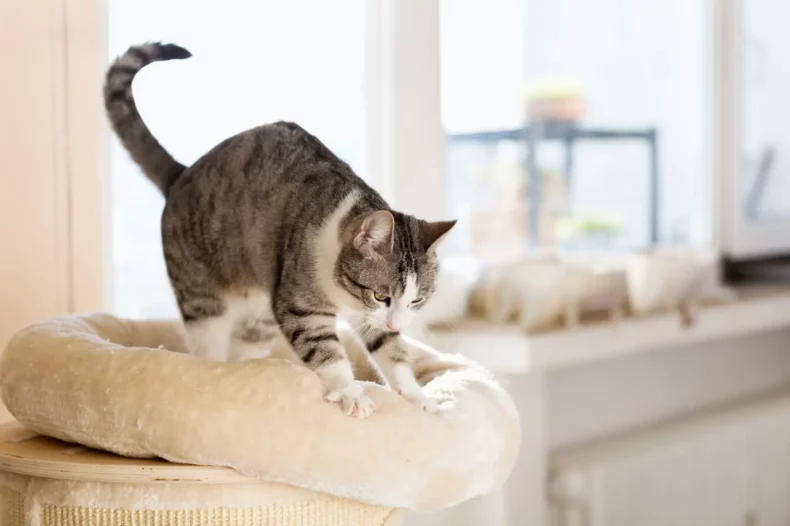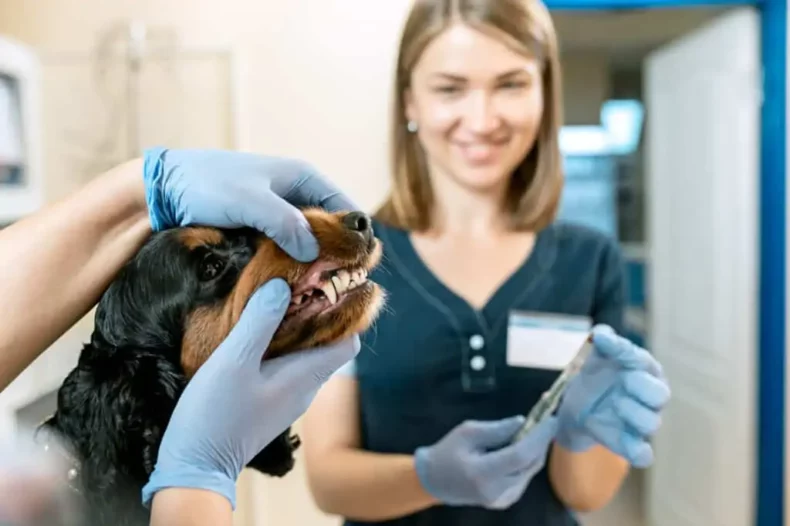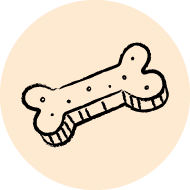
Cat language: what does my cat want to say?
Everyone wonders at times: “What does my cat want to say?” We humans can talk to each other, but our pets can communicate with us much more challenging. So, we need to find another way to understand them. Are you curious about cat language and do you want to better understand your cat? Read on!
What is cat language?
Cats communicate differently from us. You can distinguish cat language into verbal and non-verbal language. Cats use much more body language (non-verbal) and less sound (verbal). Moreover, each cat has its own style of communication. If you want to learn more about your cat’s body language, then this blog is the right place for you!
How can you talk to your cat?
You can simply talk to your cat if you want to communicate with your beloved pet. Cats have difficulty understanding commands but learn to recognize your tone. Use a higher pitch to convey friendliness and a lower pitch for anger or displeasure.
If you frequently repeat specific words to your cat, your cat will begin to understand them. For example, if you often say “bed” before going to sleep, your cat will recognize this and follow you to the bedroom.
How to say “I love you” in cat language?
We can also use non-verbal communication or body language to communicate with our cat. Want to smile at your cat? Do it with your eyes instead of your mouth. Blinking at your cat indicates that you like him. Maybe you’ll get a blink back!
These are the different types of cat language to better understand your cat!
Do you want to better understand your cat? Below, we provide a brief list of emotions that you can easily observe in a cat. Discover them quickly!
Cat language when your cat is relaxed
You can calmly blink at your cat to convey a positive feeling, but did you know that you are actually imitating cat language? Cats regularly blink their eyes to show other cats that they are relaxed. It means: “I feel at ease.” If another cat feels the same way, they will do it back.
Purring might be seen as the most pleasant and well-known sound a cat makes. It indicates that your cat is content and relaxed. However, purring is not the only reason why cats purr. They also purr when they are, for example, ill or in pain to comfort themselves.
You can also tell from the ears when your cat is relaxed. If your cat has erect ears and is lying comfortably somewhere, it is also a sign that your cat is relaxed.
You can also tell when your cat is relaxed from the position of the whiskers. They will be relaxed and pointing forward.
Cat language when your cat is playful
When your cat is playful, you can deduce this from his body language, specifically his tail. A playful cat will swish its tail back and forth.
The ears of your cat will be up, slightly forward, and pointed.
If your cat has retracted claws while playing, everything is okay! If you can see the claws, be careful. Your cat might become aggressive.
Cat language when your cat is scared, tense, or stressed
If your cat tucks its tail between its legs, it means your cat is scared. It shows that your cat is insecure and submissive.
Another sign that your cat feels scared, tense, or stressed is when it flattens its ears. If the ears are flat, your cat is afraid and ready to attack.
The
eyes of your cat also reveal a lot in this situation. Your cat will be very alert and watchful. The eyes are wide open, and the pupils are clearly dilated.
The whiskers are directed forward. Your cat might also arch its back slightly and raise it in the air.
Cat language when your cat is irritated
If your cat moves its tail from one side to the other, she is probably irritated. However, it could also be play behavior. In this case, it is important to look at the situation to determine which of the two options it is. The faster the tail swishes, the higher the tension. Be careful that the tension doesn’t escalate into a potential attack!
Another signal to pay attention to is the position of the ears. The ears of an irritated cat are not much different from the ears of a fearful cat in cat language. They are turned backward or lie flat on your cat’s head.
Cat language when your cat is angry
If your cat is angry, you will definitely notice it. The fur on your cat’s shoulders and back will stand up. This indicates that your cat is fearful or aggressive. The body will be slightly bent forward, and the paws will be braced.
The tail will be swishing forcefully, straight up, or straight backward. If the ears are up but seem directed backward, that is also a sign of anger. An angry cat will also make noise. Angry cats may hiss or growl and bare their teeth. Your cat might also ‘yell’, showing a mix of anger and fear.






 Yummy! Cookies!
Yummy! Cookies!